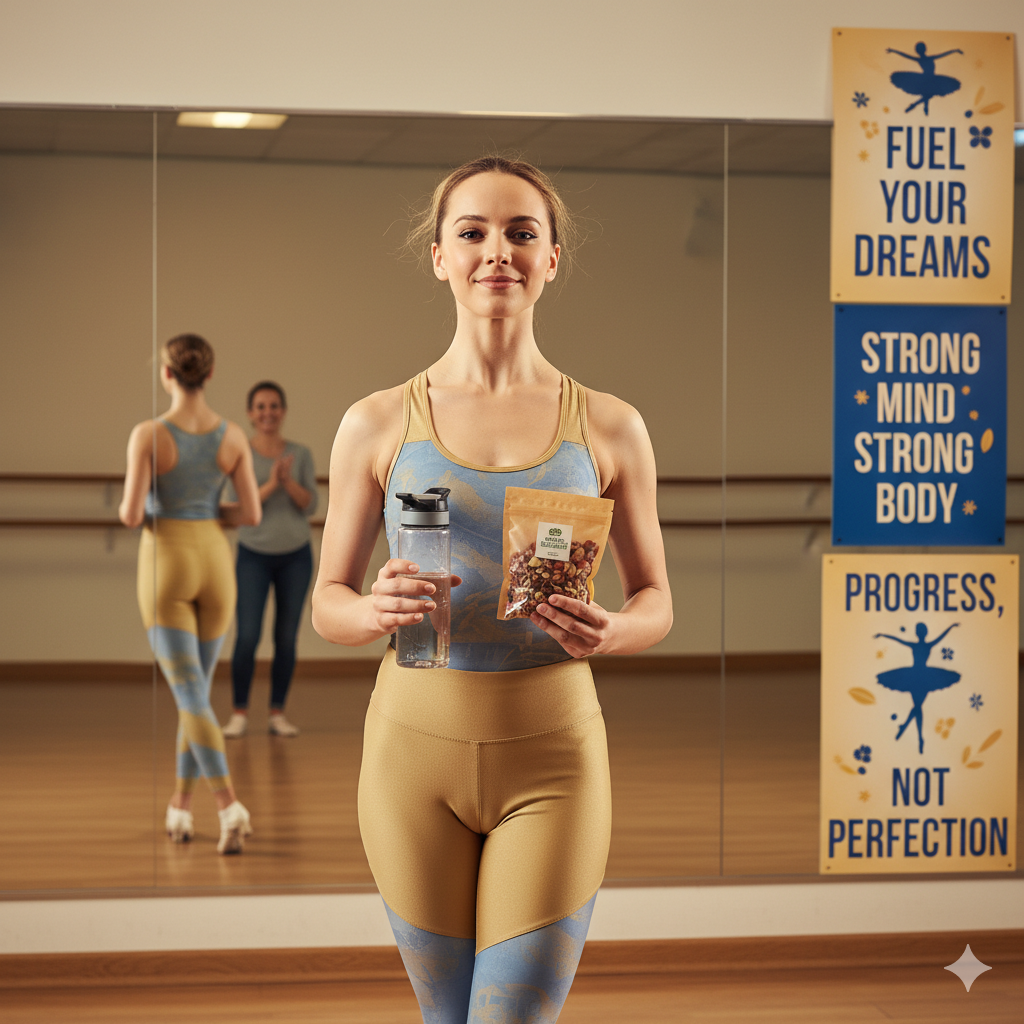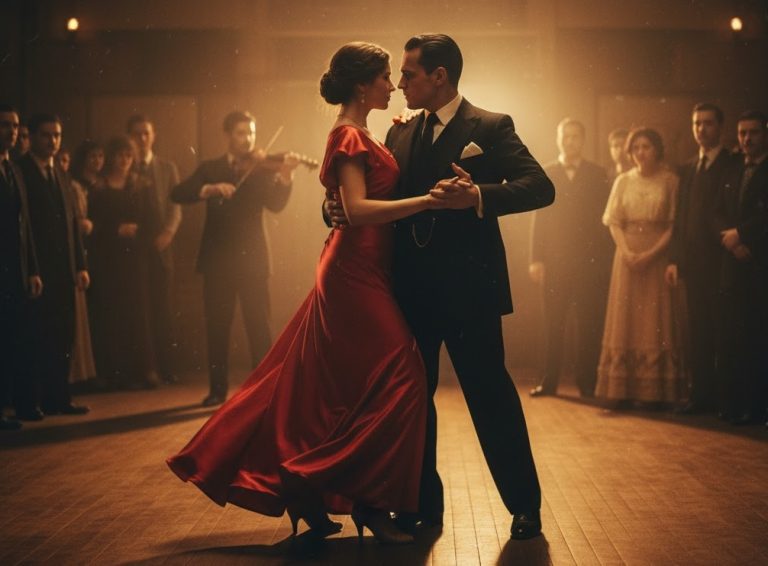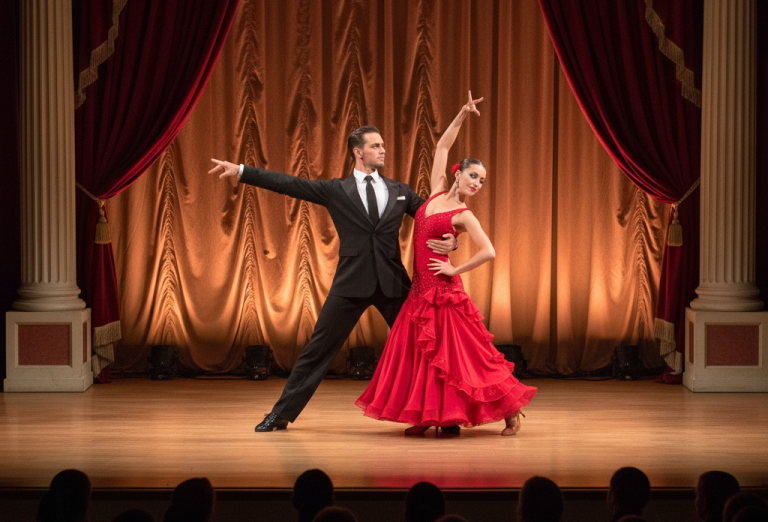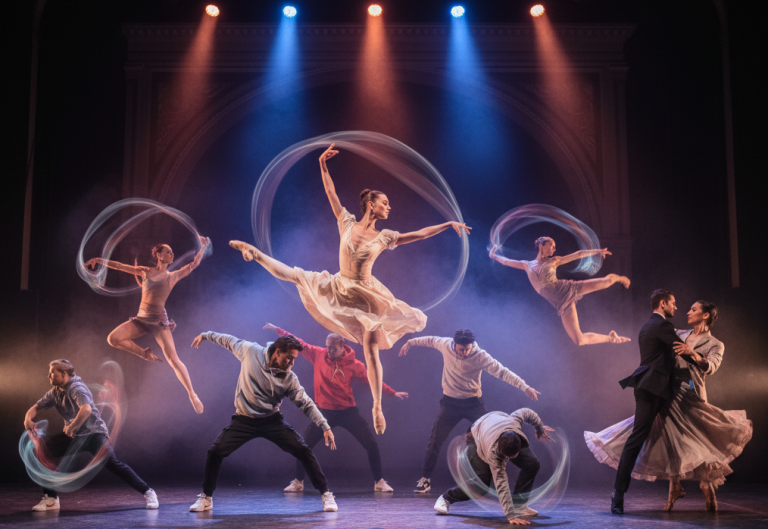Why Body Image Matters in Ballroom
Unlike many other sports, ballroom combines athleticism with aesthetics. Judges score not only precision and technique but also the overall impression a couple makes on stage. That includes how the dancers look in costume.
For many, the pressure to achieve this standard is constant. Looking “out of shape” can feel like a liability, even if performance quality is excellent.
The Culture of Strict Diets
Pre-Competition Restriction
In the weeks leading up to competitions, dancers may drastically cut calories, reduce carbohydrates, or engage in fasting to quickly achieve a leaner appearance. Some describe it as “shredding for the stage.”
Everyday Control
Outside of competition periods, dancers still maintain strict eating patterns—counting calories, avoiding “unnecessary” foods, and prioritizing appearance over pleasure.
The Role of Coaches and Peers
Sometimes the push for dieting doesn’t come from dancers themselves. Coaches, judges, or even peers may comment on weight or appearance, reinforcing the idea that slimmer equals better.
The Physical Consequences of Strict Dieting
While discipline is essential in dance, extreme dieting comes at a cost.
Energy Deficiency: Low calorie intake can leave dancers exhausted, unable to power through long rehearsals.
Injuries: Malnutrition weakens bones, joints, and muscles, making dancers more prone to stress fractures and ligament injuries.
Hormonal Imbalances: For female dancers, strict dieting can disrupt menstrual cycles. For men, it may affect testosterone levels and recovery.
Immune System Weakness: Restrictive eating often leaves dancers sick more frequently due to lack of nutrients.
These consequences often go unnoticed because the priority is performance over health.
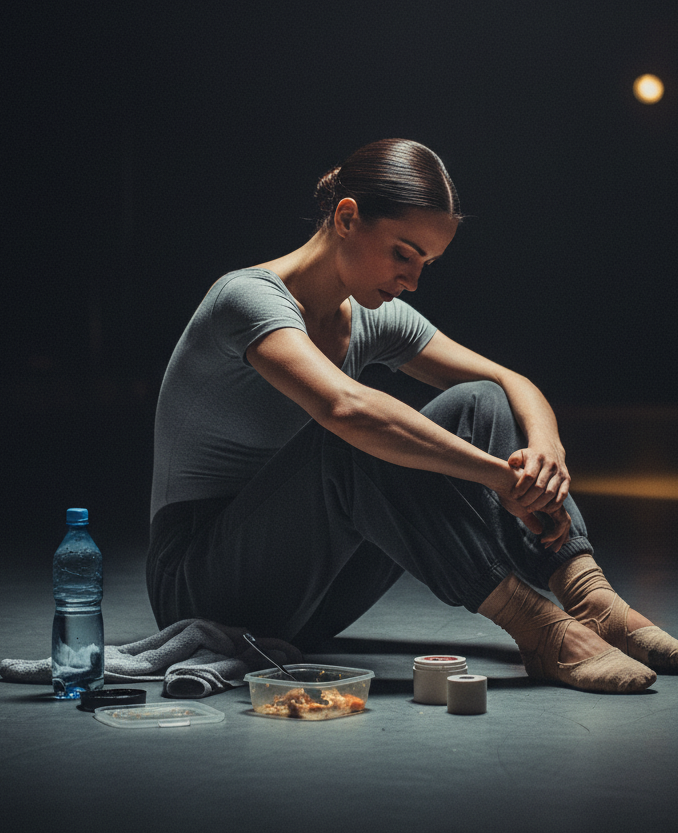
Body Image Struggles
Even when dancers are in peak physical shape, body image issues can persist. The environment fuels constant comparison and self-criticism.
Mirror Culture: Rehearsal studios are lined with mirrors, forcing dancers to stare at their bodies for hours each day.
Costume Fit Anxiety: Trying on competition costumes can trigger insecurities—every “imperfection” feels magnified under stage lights.
Social Media Pressure: Posting photos or videos often leads to scrutiny, both external and internal.
Many dancers report that confidence on stage doesn’t always equal confidence off stage.
The Mental & Emotional Toll
Strict diets and body image pressures don’t just affect the body—they take a heavy mental toll.
Disordered Eating: Some dancers fall into cycles of bingeing and restricting. Others may develop eating disorders like anorexia or bulimia.
Anxiety & Depression: The stress of “looking perfect” can trigger feelings of inadequacy, leading to mental health struggles.
Identity Issues: Dancers often tie their self-worth to their appearance, making it difficult to separate their personal value from their physical image.
These challenges remain under-discussed in the ballroom community, often hidden behind the glamour.
Lifestyle Sacrifices
The pursuit of a stage-perfect body doesn’t just happen in the studio—it infiltrates every aspect of life.
Social Sacrifices: Dancers may avoid eating out with friends to stick to their diet.
Financial Costs: Specialty diets, supplements, and nutrition coaching can be expensive.
Constant Monitoring: The scale, the mirror, and the costume fitting become daily reminders of what they “should” look like.
This lifestyle can feel isolating, yet many dancers accept it as the price of success.
Historical & Cultural Roots
Body image pressure in ballroom isn’t new—it has deep cultural roots.
Historical Aesthetics: From the golden era of ballroom in Europe, slim physiques were celebrated as the “ideal.”
Television & Media: Shows like Dancing with the Stars and Strictly Come Dancing project an image of dancers as glamorous and flawless, reinforcing the expectation.
Global Standards: Across countries, the competitive ballroom scene emphasizes similar ideals, making body image struggles a universal experience for dancers.
Voices from the Dance Floor
Dancers often express mixed feelings about the pressure:
“I love dancing, but sometimes I feel like my body isn’t good enough for the stage.”
“Before every competition, I diet hard. It’s exhausting, but I feel like I have no choice.”
“People think we’re confident because we perform, but many of us are insecure behind the scenes.”
These voices highlight the emotional contradictions at the heart of ballroom: passion for the art, but pain from the expectations.
Moving Toward Balance
While strict diets and body image struggles remain ingrained in ballroom culture, change is possible.
Nutrition Education: Promoting sustainable eating rather than extreme restriction.
Mental Health Support: Providing counseling or workshops for dancers coping with body image pressures.
Redefining Standards: Encouraging judges and coaches to value health and performance over unrealistic aesthetics.
Some dancers are beginning to speak openly about these struggles, paving the way for a healthier future in the ballroom community.
Beyond the Costume
The glittering dresses and sharp tuxedos of ballroom dancing mask a complicated reality: strict diets and body image struggles are part of daily life for many dancers.
Behind the beauty is sacrifice—missed meals, constant self-scrutiny, and the emotional burden of never feeling “enough.” Yet, this reality also reflects dancers’ resilience, discipline, and determination to pursue their passion despite the hardships.
The next time you watch a couple glide across the dance floor, remember: the sparkle of the costume tells only half the story. The other half is hidden in the struggles they endure to look the part while striving for excellence.
-
Payment Processors Compared for Dance Studio Manager (DSM)
PROCESSORS BEST FOR PRICING MODEL HARDWARE WHY IT WORKS WELL INSIDE DSM Paystri (DSM Preferred Partner) Studios wanting personalized rates, high customer support, and a strong DSM relationship. “Meet or beat” pricing for DSM users Often competitive for both low and high-volume studios Chip / swipe / tap readers (varies by region) DSM has a…
-
-
-
-
Are Dancers the Ultimate Multi-Sport Athletes?
Sport Key Skills Overlap with Dance Basketball Vertical jump, agility, coordination Jump height, lower-body strength Soccer Endurance, footwork, rhythm Aerobic capacity, movement timing MMA/Boxing Reaction time, body control Real-time adaptation, neural speed Gymnastics Balance, flexibility, choreography Shared technical elements Figure Skating Flow, control, artistry Same fusion of sport + art Track & Field Explosive power,…
-




